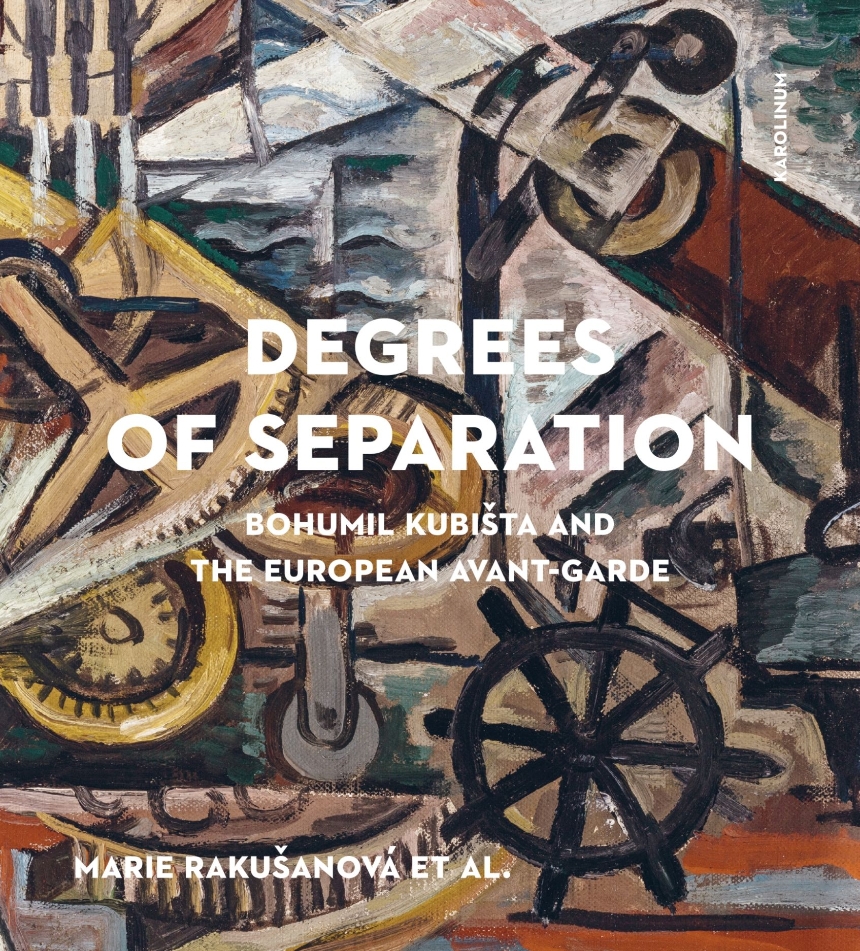Karolinum Press, Charles University
Degrees of Separation
Bohumil Kubišta and the European Avant-Garde
New edition
9788024647227
Distributed for Karolinum Press, Charles University
Degrees of Separation
Bohumil Kubišta and the European Avant-Garde
New edition
A richly illustrated reconsideration of the life and work of painter Bohumil Kubišta.
In Degrees of Separation, scholars from the Czech Republic, Canada, Germany, and Hungary take a new approach to exploring the work of one of Central Europe’s most interesting modernist painters, Bohumil Kubišta. While many art historians have viewed Kubišta’s work solely in the context of an idealized Czech canon, Kubišta did not identify with a nation-state clearly defined by ethnicity, language, or territorial reach.
Taking a transnational approach that incorporates thorough topographical research, the authors attempt to redraw the map of European modernism by exploring the artist’s subversive approach to the stylistic currents of his time. The book reveals the complex relationships within early twentieth-century Europe, as Kubišta and other Central European artists tried to balance their admiration for the dominant artistic trends coming out of Paris with their desire to find alternative forms of expression arising from local artistic and intellectual sources. The richly illustrated book features a wealth of documentation, including an exhaustive timeline with notes, a comprehensive inventory of Kubišta’s works, and an up-to-date exhibition list.
In Degrees of Separation, scholars from the Czech Republic, Canada, Germany, and Hungary take a new approach to exploring the work of one of Central Europe’s most interesting modernist painters, Bohumil Kubišta. While many art historians have viewed Kubišta’s work solely in the context of an idealized Czech canon, Kubišta did not identify with a nation-state clearly defined by ethnicity, language, or territorial reach.
Taking a transnational approach that incorporates thorough topographical research, the authors attempt to redraw the map of European modernism by exploring the artist’s subversive approach to the stylistic currents of his time. The book reveals the complex relationships within early twentieth-century Europe, as Kubišta and other Central European artists tried to balance their admiration for the dominant artistic trends coming out of Paris with their desire to find alternative forms of expression arising from local artistic and intellectual sources. The richly illustrated book features a wealth of documentation, including an exhaustive timeline with notes, a comprehensive inventory of Kubišta’s works, and an up-to-date exhibition list.
700 pages | 724 color plates, 312 halftones, 22 line drawings, 6 maps | 9 1/4 x 10 1/4 | © 2021
Art: Art Criticism, European Art
Table of Contents
I. Introduction (Marie Rakušanová)
II. Map: Kubišta and Europe
III. Kubišta and the World: Reality Mediated by Objects (Marie Rakušanová)
IV. Map: Kubišta in Florence
V. Florence: Objects, Territories and Topographies (Marie Rakušanová – Eva Bendová)
VI. Map: Kubišta in Prague
VII. The First Osma Exhibition (Marie Rakušanová – Mahulena Nešlehová)
VIII. The Concept of Colour in the Work of Bohumil Kubišta (Mahulena Nešlehová)
IX. The Second Exhibition of the Osma Group (Marie Rakušanová – Mahulena Nešlehová)
X. Kubišta’s French Connections: Networks, Reception, Ideals (Françoise Lucbert)
XI. Map: Kubišta in Paris
XII. Kubišta and the Social Topography of Paris: 1909–1910 (Marie Rakušanová)
XIII. Inspirations Drawn from Kubišta’s Stay in Paris (Mahulena Nešlehová)
XIV. Map: The Movement of Kubišta’s Works through Europe
XV. Bohumil Kubišta and Germany (Anke Daemgen)
XVI. Kubišta, Ethics, Dietetics, the Psychology of Vision, Spirituality and Monism (Marie Rakušanová)
XVII. The Will to Spirituality and Its Influence on the Composition of Kubišta’s Works (Mahulena Nešlehová)
XVIII. The Concept of Geometric Infrastructure in the Work of Kubišta and the Section d’Or (Mahulena Nešlehová)
XIX. Kubišta’s Paradoxical Cubism: 1912–1913 (Marie Rakušanová)
XX. Bohumil Kubišta, Cubism and Hungary (András Zwickl)
XXI. Kubišta – Futurist, Cubist, Expressionist in Lviv in 1913 (Marie Rakušanová)
XXII. Moderní umení, the 45th Exhibition of the Mánes Association of Fine Artists – “The Most Comprehensive Exhibition” in the “Whole World”? (Marie Rakušanová)
XXIII. Map: Kubišta in Pula
XXIV. A View through the Cannon Barrel: Bohumil Kubišta in Pula, 1905–1906, 1913–1918 (Eva Bendová)
XXV. Indications of Kubišta’s New Programme (Mahulena Nešlehová)
XXVI. Conclusion (Marie Rakušanová)
XXVII. Timeline and Documentary Section
XXVIII. Notes
XXIX. Abbreviation List
XXX. Sources
XXXI. Inventory of Paintings
XXXII. Index of Names
II. Map: Kubišta and Europe
III. Kubišta and the World: Reality Mediated by Objects (Marie Rakušanová)
IV. Map: Kubišta in Florence
V. Florence: Objects, Territories and Topographies (Marie Rakušanová – Eva Bendová)
VI. Map: Kubišta in Prague
VII. The First Osma Exhibition (Marie Rakušanová – Mahulena Nešlehová)
VIII. The Concept of Colour in the Work of Bohumil Kubišta (Mahulena Nešlehová)
IX. The Second Exhibition of the Osma Group (Marie Rakušanová – Mahulena Nešlehová)
X. Kubišta’s French Connections: Networks, Reception, Ideals (Françoise Lucbert)
XI. Map: Kubišta in Paris
XII. Kubišta and the Social Topography of Paris: 1909–1910 (Marie Rakušanová)
XIII. Inspirations Drawn from Kubišta’s Stay in Paris (Mahulena Nešlehová)
XIV. Map: The Movement of Kubišta’s Works through Europe
XV. Bohumil Kubišta and Germany (Anke Daemgen)
XVI. Kubišta, Ethics, Dietetics, the Psychology of Vision, Spirituality and Monism (Marie Rakušanová)
XVII. The Will to Spirituality and Its Influence on the Composition of Kubišta’s Works (Mahulena Nešlehová)
XVIII. The Concept of Geometric Infrastructure in the Work of Kubišta and the Section d’Or (Mahulena Nešlehová)
XIX. Kubišta’s Paradoxical Cubism: 1912–1913 (Marie Rakušanová)
XX. Bohumil Kubišta, Cubism and Hungary (András Zwickl)
XXI. Kubišta – Futurist, Cubist, Expressionist in Lviv in 1913 (Marie Rakušanová)
XXII. Moderní umení, the 45th Exhibition of the Mánes Association of Fine Artists – “The Most Comprehensive Exhibition” in the “Whole World”? (Marie Rakušanová)
XXIII. Map: Kubišta in Pula
XXIV. A View through the Cannon Barrel: Bohumil Kubišta in Pula, 1905–1906, 1913–1918 (Eva Bendová)
XXV. Indications of Kubišta’s New Programme (Mahulena Nešlehová)
XXVI. Conclusion (Marie Rakušanová)
XXVII. Timeline and Documentary Section
XXVIII. Notes
XXIX. Abbreviation List
XXX. Sources
XXXI. Inventory of Paintings
XXXII. Index of Names

